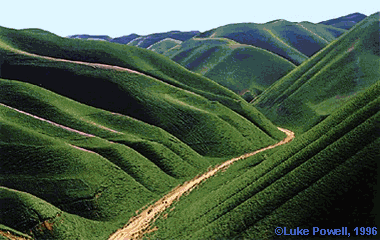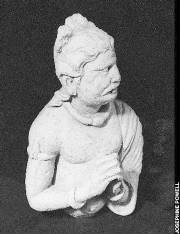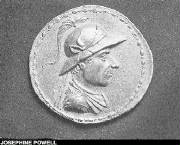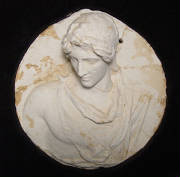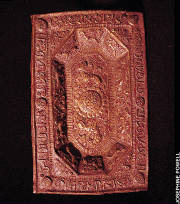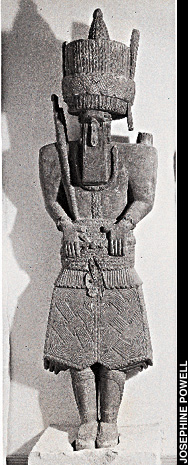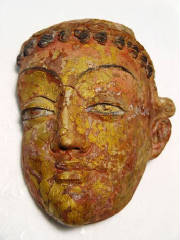|

          
|
Museum Page 1 of 1
Figure from Nuristan
A double decadrachma (ca. 120 B.C.) of the Macedonian ruler Amyntas was one of
six found in a hoard at Kunduz. They were the largest Greek coins ever minted (3.4 ounces); one is reportedly for sale in
London
A terra-cotta figure from an ancient Buddhist monastery at Tepe Maranjan
The "Bactrian Aphrodite" brooch was part of the Bactrian collection recovered
in April 2004. The gold carving shows Greek, Indian and Asian influences—a product of the Silk Road melting pot of cultures.
An autonomous region 4,000 years ago, Bactria was overtaken by a wave of expansionist empires, including the nomadic Kushan who prevailed at the time these gold treasures were buried. The brooch is featured in the December 2004 issue of National Geographic magazine. This carved ivory panel depicts scenes of Bactrian royal court life. It comes
from Begram, the Kabul-area summer capital of the Kushan kings, and dates back to the second or third century. National Geographic
Fellow Fredrik Hiebert led an effort to rediscover Afghanistan’s ivories and thousands of other treasures included in
the treasure hoard.
This plaster wall decoration once hung
in a summer palace of a Kushan king. It is the bust of a poet, possibly Menander of Begram. The 2,000-year-old piece was discovered
intact in an inventory of museum treasures supported by National Geographic and the National Endowment for the Humanities.
|
This copper tray with mythological figures,
animals, and Kufic inscription, comes from excavations at Ghazni
Stucco figure of worshiper from Hadda
This painted Bodhisattva—"enlightened being"—on gilded clay hails from seventh-century Fondukistan, a medieval settlement and Buddhist monastery in Afghanistan. The artifact was recovered in a special inventory project led by National Geographic and partly supported by the U.S. National Endowment for the Humanities. Head of Buddha
Ivories from Begram, capital of the Kushan
Empire in the first century A.D., are among the museum's prize possessions now for sale on the international art market
|
|||||||||||||||||||||||||||||||||
|
----------------------------------------------------------------------------------------------------------------------------------------------------
[ Go to Top ]
. 
|
|||||||||||||||||||||||||||||||||||



